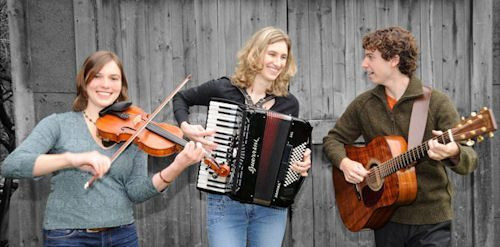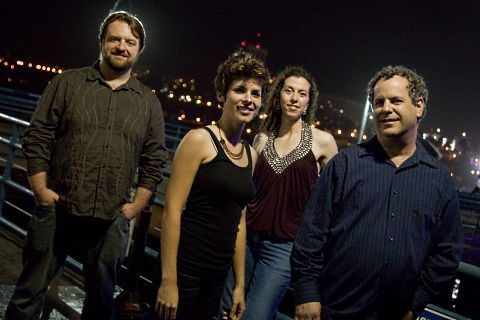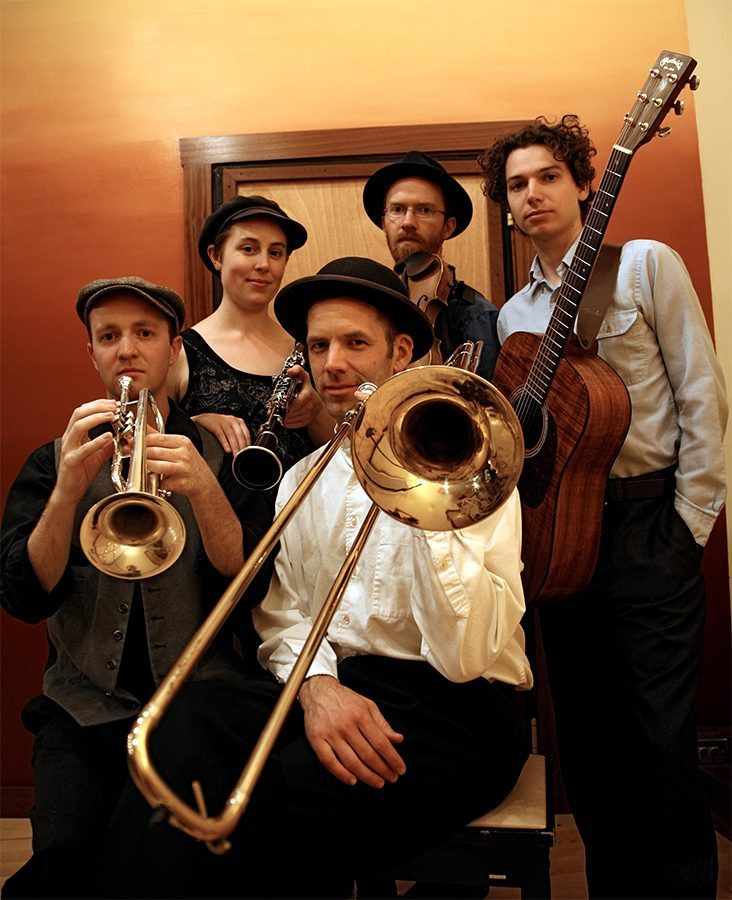Contra dance music is a vibrant and infectious genre that perfectly embodies the spirit of Dancing Music. Rooted in traditions from Celtic to Cape Breton, old-time to bluegrass, and infused with Scandinavian and French-Canadian influences, this style of music is known for its lively energy and intricate rhythms. For years, contra dance bands have been the unsung heroes of social dance scenes, providing the soundtrack for countless evenings of swirling skirts and energetic footwork. While often experienced in community halls and dance events, the compelling nature of contra dance music is now breaking out and finding its place in the broader world of performance music.
Many have long recognized the potential for contra dance bands to captivate audiences beyond the dance floor. Their mastery of diverse musical traditions combined with their inherent precision and dynamic versatility makes them exceptionally well-suited for performance settings. The challenge, however, lies in adapting their typical sets, often consisting of 15-minute medleys of repetitive tunes designed for dancers, into a concert format that appeals to listeners. Fortunately, several bands have successfully navigated this transition, developing musical styles that are not only danceable but also deeply engaging for pure listening pleasure. Here, we explore three such bands that exemplify the exciting evolution of contra dance music and its growing appeal to a wider audience.
One such group leading this charge is Night Watch, a band hailing from New England, the very heartland of contra dance tradition. Their music resonates with the echoes of countless nights spent playing for enthusiastic dancers in historic dancehalls. Night Watch stands out as a prime example of a new wave of contra dance bands successfully stepping into the concert scene. Their debut album, Splendid Isolation, serves as compelling evidence of their ability to showcase the power and dynamism of contra dance music to listeners as much as to dancers.
 The band Night Watch performing live, showcasing their instruments including fiddle, accordion, and guitar, in a warm stage lighting setting.
The band Night Watch performing live, showcasing their instruments including fiddle, accordion, and guitar, in a warm stage lighting setting.
Night Watch brings a fresh energy to the stage, demonstrating the captivating potential of contra dance music for a wider audience.
Their musical palette is drawn from the rich and diverse influences that characterize contra dancing music, mirroring the cultural tapestry of New England. This includes the sounds of Irish, Scottish, and French-Canadian traditions, alongside Scandinavian elements and the quintessential contra dance band’s embrace of newly composed tunes. Remarkably, the original compositions by Night Watch’s members (each of whom is a skilled tune writer) are among the album’s most captivating tracks. Accordionist and pianist Elvie Miller’s Dromore Wood, for example, is a stunningly beautiful waltz, inspired by a memorable visit to County Clare in Ireland. Mandolin and guitarist Owen Morrison contributes two electrifying reels, Javelina Hunt/Hops And Barley Mow, which are undeniably perfect for a high-energy dance medley. Fiddler Naomi Morse adds The Tulip Tune, a charming reel that reflects her graceful and delicate touch on the fiddle.
In a genre where contra dance tunes can sometimes fall into predictable patterns, relying on repetitive arpeggios or overly simplistic minor key melodies, Night Watch distinguishes themselves with beautifully crafted and original compositions. As a contra dance fiddler myself, I can attest to the rare pleasure of finding an entire album where every tune is worth learning and playing – a testament to the quality of Night Watch‘s musicianship. Furthermore, unlike many albums of dance tunes that can become monotonous with endless medleys and minimal variation, Splendid Isolation shines through its thoughtful and intricate arrangements. Instruments weave in and out, keys shift subtly, and tunes gracefully modulate, ensuring that each track remains vibrant and engaging from start to finish. Night Watch powerfully demonstrates that the enduring legacy of New England’s contra dance music tradition is in exceptionally capable hands, ready to inspire both dancers and listeners alike.
Another band pushing the boundaries of contra dance music is The Syncopaths. Their album Five Gears delves into a realm of chamber folk, characterized by complex, syncopated rhythms and instrumental virtuosity. This approach resonates with the sound that propelled bands like Crooked Still to the forefront of the contemporary folk scene. It’s a sound that The Syncopaths embrace with confident artistry, making it distinctly their own by grounding it in the foundations of contra dance music traditions. Each member of The Syncopaths is a seasoned virtuoso on their respective instrument. Fiddler Ryan McKasson honed his skills within the acclaimed family band, The McKassons, a group rooted in Scottish fiddle traditions and recognized as one of the most outstanding Celtic bands to emerge from the Northwest. Mandolinist Ashley Broder, previously touring with fiddler Jamie Laval, is a formidable player known for her dynamic counterpoint harmonies, precise melodic lines, and improvisational skills that remain remarkably original. Pianist Jeffrey Spero provides wonderfully nuanced accompaniment, consistently revealing new dimensions within the music.
 The Syncopaths band members posing closely together, showcasing their instruments including fiddle, mandolin, piano, and guitar, in a casual outdoor setting.
The Syncopaths band members posing closely together, showcasing their instruments including fiddle, mandolin, piano, and guitar, in a casual outdoor setting.
The Syncopaths bring a contemporary edge to contra dance music, blending virtuosity with engaging rhythms and vocal harmonies.
However, a truly defining element of The Syncopaths’ sound is the captivating voice of Christa Burch. While vocals are not traditionally common in contra dance bands, their inclusion marks a refreshing departure from convention. Burch’s voice, with its smooth and captivating tone, combined with the band’s rich and sophisticated arrangements, creates a truly compelling sonic experience. The Syncopaths could be considered the Ani Difranco of the contra dance world – innovative, fiercely independent, and pushing the boundaries of the genre. Their unique blend of virtuosity and rhythmic drive makes them a band that is both incredibly difficult to imitate and absolutely electrifying to experience, whether on the dance floor or in concert. With a busy touring schedule, it’s clear that the appeal of The Syncopaths’ invigorating take on contra dance music is resonating widely, drawing in audiences far beyond the traditional dance community.
Tracks like Meriweather and The Blackest Crow from The Syncopaths exemplify their dynamic range and innovative arrangements.
Finally, Elixir represents another facet of the evolving landscape of dancing music. This band has garnered significant attention on folk radio across the US, and their album Rampant makes it clear why. Elixir masterfully integrates vibrant brass arrangements into both traditional and contemporary contra dance music. The infectious energy of a hot horn section pumping out lively riffs is simply irresistible, making it virtually impossible to stay still when Elixir takes the stage. A particularly unique element is the presence of caller Nils Fredland within the horn section itself. The ability to call dances while simultaneously playing an instrument is a remarkable feat, harkening back to earlier eras when callers often doubled as fiddlers.
 The band Elixir, featuring a diverse group of musicians with brass instruments like trumpet alongside fiddle and guitar, in a vibrant and energetic performance pose.
The band Elixir, featuring a diverse group of musicians with brass instruments like trumpet alongside fiddle and guitar, in a vibrant and energetic performance pose.
Elixir infuses contra dance music with bold brass arrangements and a dynamic stage presence, creating an irresistible sound for dancing.
Elixir is undeniably a bold and innovative band. Their arrangements are intricate and beautifully crafted, establishing them as one of the most successful folk bands to incorporate brass instruments effectively – a feat that has proven challenging even for larger ensembles. Adding to their rich sound is the inclusion of traditional French-Canadian footwork (podorhymie) by fiddler Ethan Hazzard-Watkins, who also incorporates the syncopated bowings characteristic of this tradition. Hazzard-Watkins’ fiddle playing is a central element of Elixir’s sound, ranging from tender and heartfelt melodies to fiery and fast-paced passages. Guitarist Owen Morrison (also of Night Watch) contributes a powerful rhythmic foundation and skilled flatpicking, while clarinetist Anna Patton and trumpet player Jesse Hazzard-Watkins complete the core brass and woodwind section. Elixir truly embodies the essence of a perfect contra dance band, capable of producing a big band sound with a relatively small ensemble while also delivering moments of subtle and delicate musicality.
In conclusion, contra dance music, a vibrant form of dancing music, is experiencing an exciting period of evolution. Bands like Night Watch, The Syncopaths, and Elixir are demonstrating the genre’s capacity to move beyond its traditional dance floor setting and captivate a wider audience. Their innovative approaches, blending deep roots in tradition with contemporary musical sensibilities, are expanding the horizons of dancing music and ensuring its continued vitality and appeal for years to come. Discover these bands and delve into the energetic and captivating world of contra dance music – a genre that proves dancing music can be as engaging for listening as it is for dancing.
